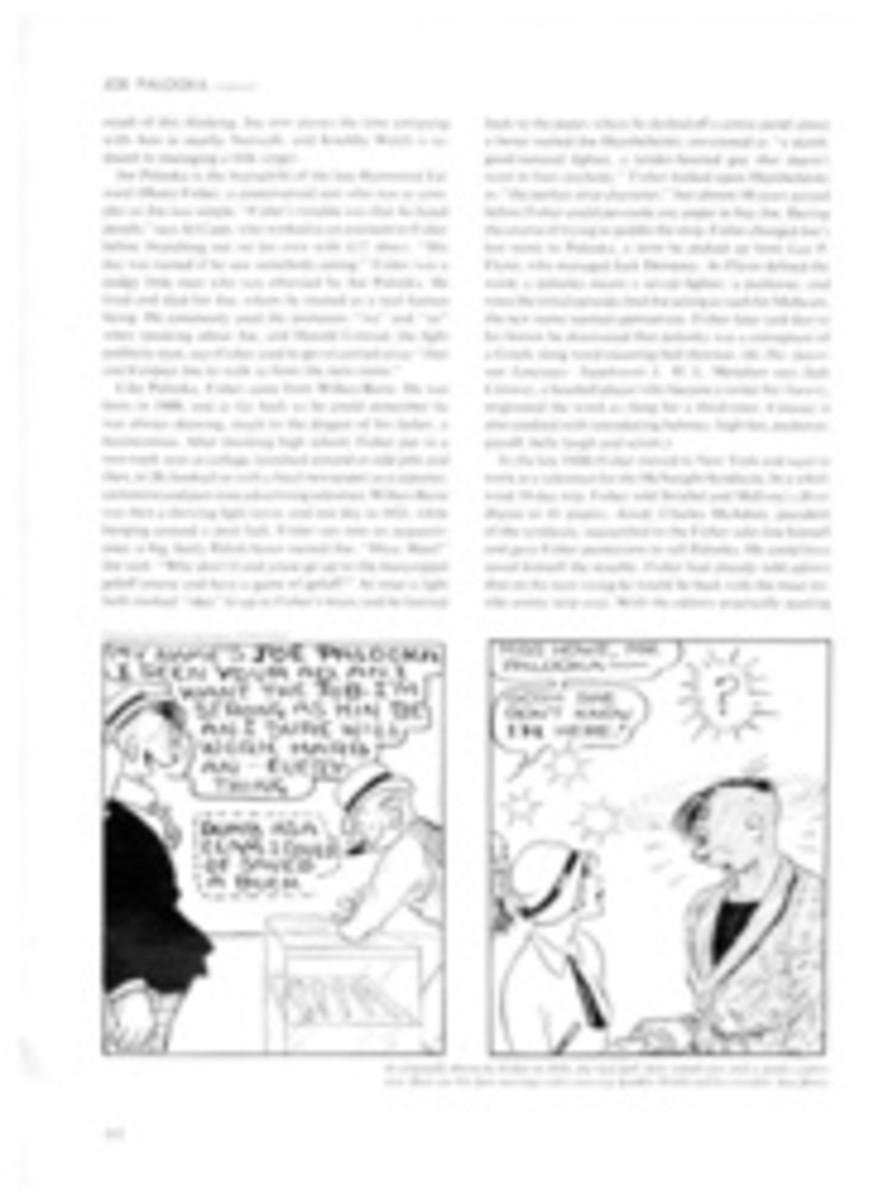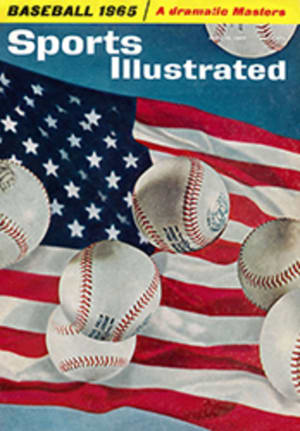
SKIP, SKIP, SKIP—AND THWACK!
When I said that I was riding copilot with Howard Weiler in his little outboard Wildcat, some of the other drivers in the Miami-Nassau race gave me the kind of look generally reserved for addicts of Russian roulette. "Going with Weiler?" said the pilot of one huge inboard noncommittally. "Well, good luck." But Dick Bertram, an offshore powerboat veteran if there ever was one, offered me a grain of comfort: "There are some drivers in this race I wouldn't want to go with," he said, "but I'd ride with Howard any day."
Big boats like Bertram's 36-foot Brave Moppie, Don Aronow's Donzis and Jim Wynne's new Maritime grab most of the headlines in the annual Miami-Nassau powerboat race, but the boats and the crews that take the real beatings are the outboards. Weiler's North American S-22 with its twin Johnson 90-hp Golden Meteor II motors is only 22 feet long and getting her to Nassau would draw on every minute of her pilot's long experience in offshore racing. Weiler, a onetime paratrooper with the 11th Airborne, had driven boats like this in eight Nassau races. He had won two of them, but he spent the day before the race limping about his lawn (he had just re injured his back) making last minute checks on equipment and eating tranquilizers to calm himself down. "I always get this tight feeling," he said. Even though I had never ridden one of these seagoing bucking broncos at top speed across 185 miles of open ocean, I knew exactly what he meant.
The start, outside Miami's Government Cut, was scheduled for 7 a.m., but by the dawn's earliest light I was so tense I didn't know whether to stand up or sit down. Howard, of course, was hoping for a rough passage to test his boat and his skill. He told me we stood a much better chance of winning in bad weather. But all I could do was pray that the ocean would be as fiat as possible. I also prayed that our Wildcat's two motors would get us across it to Nassau as quickly as possible.
At 6 a.m. we donned our foul-weather gear and put on life preservers and crash helmets. Then Weiler started the engines, and we joined the long train of 47 boats heading out of the harbor to Government Cut and the rising sun. It was a gentle kind of day and, as another outboard—one of our competitors—passed us, Weiler spread his hands out fiat and waved them to and fro. Then he threw them up in the air in sign language meaning "Flat calm; no good."
Once outside the Cut, we followed the starting boat while all around us big engines and little throbbed and whined in anticipation. Overhead, flying an unruly pattern that would paralyze a traffic controller, were helicopters, single and twin-engine planes and—wending its way through them all—the elephantine Goodyear blimp. At 6:45 Weiler was glancing at his watch with increased regularity. With our helmets acting as earplugs all communication between us was by hand signal. Weiler indicated that, since the weather was so calm, we would use the gas in the forward tank first to get the bow up in the air. He quickly unplugged the gas lines leading from the after tanks and connected in their place the clear plastic veins that ran from the forward tank.
Suddenly the race began. One second we were idling gently in the smoothly heaving water, the next Weiler had the throttles all the way down and we lifted quickly onto a plane. Up the line as far as we could see boats were running as if chased by gunfire. We hit the first small roller and I thought, "Oh God, this is only the first minute. Can I stand maybe nine hours of this?" We landed hard again, and I figured I'd better find a way of cushioning the shocks. Skip, skip, skip, thwack! Skip, skip, skip, thwack! went the Wildcat. When she went thwack it felt as though my spine was trying to escape from my hide, carrying all my vital organs with it. But a pattern was forming, and after five minutes I learned to sit back and relax in the padded chair for the skip-skip-skip part, then use my legs and feet as shock absorbers for the thwack. Meanwhile, with one hand on the wheel and the other on the throttles, Weiler was taking the bumps as effortlessly as a champion horseman posting in Madison Square Garden. I wondered what the Wildcat's, motion must be like in rough weather, then decided such thoughts were not good to dwell on with so much ocean still to travel.
Halfway across the Gulf Stream a 27-footer named Miss Pinky II with three 100-hp Mercuries on her stern moved into view. Weiler slid over directly ahead of her, dashing her with spray. Pinky gave us as good as she got as she passed by. Beside Pinky and most of the other decked-over outboards, Weiler's looks open and bare, but it is the bareness of tight, functioning simplicity. "You've got to have a rig that holds together," Weiler told me. "That's why I like an open boat. You can see everything and catch it before it goes wrong."
With her foam-filled hull and rugged structure, the 22-foot Wildcat is a good 7 mph slower than many of the other outboards, but she is twice as durable. That's why Howard wanted rough seas. Even though we were making 45 mph as Pinky II went by, we knew we must be trailing several others.
The race's first mark is Cat Cay, where the boats dart through the gap out of the blue, deep water of the Straits of Florida and into the clear aquamarine shallows of the Bahamas and Cat Cay Harbour itself. There each entry picks up, on the fly, a transire entry paper catapulted off the dock by the strong right arm of a customs official.
The confusion was great. One big boat, Holocaust, running second at the first check point, drove up on a sandbar at full speed after leaving the harbor. Jim Wynne's Maritime swung in to pick up the transire and ran right up on Brave Moppie's stern. Littering the sand banks were other boats with sick engines or missing propellers. We swung in, swung out and at full speed headed for Sylvia Light, the next mark. Weiler made sharp little waves with his hands and pointed ahead, but the waves didn't materialize, and we rushed across the unruffled water, the two Johnsons purring as though on a Sunday afternoon run.
Halfway to Sylvia, Weiler pointed at the forward fuel tank. He lifted a corner of his helmet and yelled, "Watch for bubbles. It's about time to switch." For 10 minutes I kept my eyes riveted on the plastic fuel lines, looking for the bubbles that would warn us the tank was running dry. The lines stayed strong and clear until we bounced off a little wave and a stream of bright bubbles appeared in the tubes. Weiler throttled back for the first time, and I thought he would stop while I uncoupled the old lines and plugged in the new. But I soon made a discovery. You don't stop in racing. I changed lines as quickly as I could. The engines didn't falter. Suddenly Weiler pointed ahead. There was Miss Pinky again, and we were catching her fast. One of her three engines had broken down, and she was limping along on two. As we passed her, Weiler crossed his fingers and I put my hands together in supplication. Even though the big boats were ahead we began to feel we stood a chance, despite the calm weather.
Beneath us in the clear water as we ran for Northwest Light the clear white sand raced by, punctuated by dark heads of coral. We began to worry now, not so much about the competition but the engines. All morning we had passed boats full of the most expensive, powerful machinery, broken down and silent. Once we saw a yellow boat with a huge cloud of smoke over her. It turned out to be Vivacity, owned by Max Aitken and driven by Tommy Sopwith. A trick of perspective made her look as though she were sinking. Weiler stuck his thumb down and headed over to see if we could help. But Vivacity slowly turned, revealing her whole topsides. We could see that the smoke was coming from her exhausts. Weiler said, "Whew!" inside his helmet and we resumed course.
He zoomed into the tight turn at the Frazers Cay club and out again for the final run to Nassau. With every mile we covered the tension increased and the limping boats around us served to remind us that we still risked breaking down in the homestretch. My aching back was replaced by screaming nerves until we ran into the only real chop of the race, with Nassau only a few miles ahead. Instead of the skip, skip, skip, thwack, the motion changed to thwack, thwack, thwack. "Oh God," I said to myself, "just let these engines keep running." Into the north channel we raced, past the British Colonial and its bikinied beach, past the Prince George Dock and up to the finish line. Still going full tilt we came up to one of the big boats which had already finished. "Are we first outboard?" Weiler yelled, but the crew on the other boat didn't understand.
Four hours thirty-nine minutes and five seconds after leaving Miami, we crossed the line off the Nassau Yacht Club. A small boatload of photographers attached itself to us as Weiler throttled back for the first time. Weiler took his helmet off and yelled again. "Who was first outboard?" "You are!" they answered, and we shook hands.
It had been a flawless race for us; the engines had purred along quietly, the navigation put us right on every mark and only at the start and finish had there been any sort of punishment—and that was slight. Weiler steered the Wildcat into her berth and threw the starboard engine into reverse. Nothing happened. The engine ran but the propeller didn't. A critical pin had dropped out making the propeller useless. "Whew!" said Weiler. "Whew!" said I.
PHOTO

